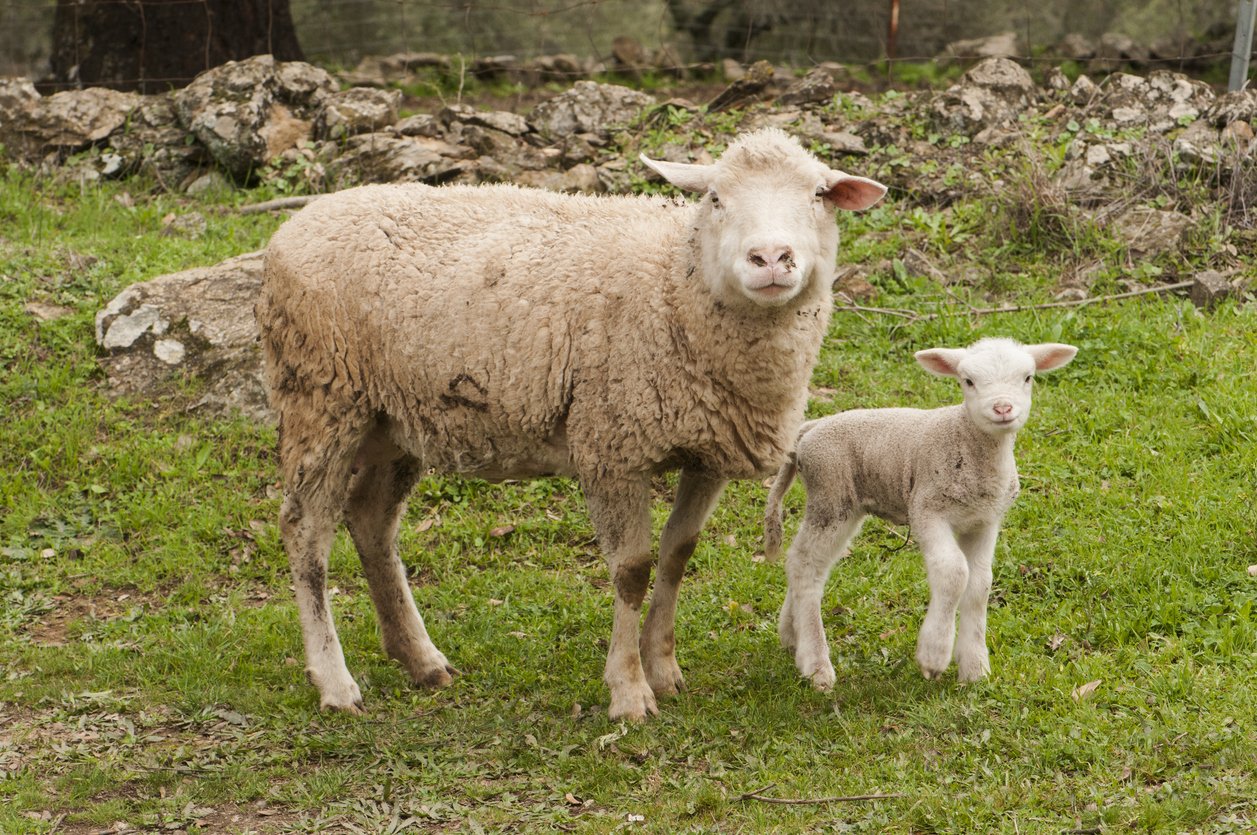Artificial insemination (AI) and embryo technologies have revolutionized reproductive management in sheep breeding, offering tools to enhance genetic gain, improve productivity, and support animal welfare. This article integrates findings from recent literature, to provide an overview of current practices, innovations, and challenges in sheep breeding.
Prefer to listen to this article? Click the play button below and enjoy our podcast!
Techniques of Artificial Insemination in Sheep Breeding
1. Cervical and Vaginal AI
Traditional AI methods involve vaginal or cervical deposition of semen. These techniques are less invasive but yield lower pregnancy rates, especially with frozen semen, due to the anatomical complexity of the ovine cervix [4].
2. Laparoscopic AI (LAI)
LAI is the gold standard for using frozen semen in sheep. It bypasses the cervix by depositing semen directly into the uterine horns, achieving pregnancy rates of 60–75% [2]. Despite its effectiveness, LAI requires specialized equipment and training, making it costlier and less accessible for small-scale producers.
3. Transcervical and Non-Surgical AI
Transcervical AI (TCAI) and non-surgical embryo recovery (NSER) are gaining some interest in recent years, especially in goats and select sheep breeds. Advances in hormonal cervical dilation protocols have improved the feasibility of these methods in sheep, offering less invasive and more welfare-friendly alternatives [1], but still do require large scale validation to become a suitable and trustable alternative.
Factors Influencing AI Success
1. Semen Quality
Spanner et al. (2024) emphasize that semen quality is pivotal. Key parameters include:
- Motility and velocity: Higher average-path velocity (VAP) and curvilinear velocity (VCL) correlate with increased fertility.
- Morphology: Abnormalities in sperm structure reduce fertility.
- Viability and membrane integrity: Essential for sperm function and fertilization.
- DNA integrity and oxidative stress: High DNA fragmentation and oxidative damage impair fertility [2].
2. Semen Handling and Storage
Cryopreservation damages sperm membranes and DNA. Optimal freezing concentrations (200–400 million sperm/mL) and packaging methods (pellets vs. straws) significantly affect post-thaw viability [2].
3. Sperm Dose
LAI allows for reduced sperm doses (as low as 20 million motile sperm), enhancing the efficiency of elite sire utilization [2], in cervical insemination the semen is used fresh with a significantly higher dose of motile sperm cells requested 60 to 100 millions of motile sperm per dose, it is necessary to maintain the sperm cells at 28-30°C after collection and the semen deposition should be done as soon as possible in order to maintain good fertility, with a target of 30 to 60 minutes from semen collection to cervical deposition, making this technique logistically challenging [4].
Female and Environmental Factors
1. Ewe Condition
Age, body condition score (BCS), live weight, and intra-abdominal fat influence reproductive outcomes. Ewes aged 1.5–4.5 years with moderate BCS (2.5–3.5) show optimal fertility [2].
2. Estrus Synchronization
In order to proceed with timed artificial insemination the ewes estrus and ovulation timing requires to be synchronized. The most effective programs rely on the combination of progestogen sponges, their role is to “mimic” an artificial diestrus and they are normally left in place for a period of 12 to 14 days, and at the time of their removal a single dose of equine chorionic gonadotropin (eCG) is administered, this complex glycoprotein has binding capacities for both FSH and LH receptors, allowing the growth and controlled ovulation of more than one follicle, in a dose dependent matter. Timing of AI (typically 48–60 hours post-sponges removal) is critical.
3. Environmental Conditions
Heat stress, humidity, and seasonal changes impact fertility. High temperatures (>32°C) reduce ovulation and embryo survival. Rainfall and feed availability also play roles [2][3].

Economic and Welfare Considerations
LAI, while effective, is resource-intensive. Cost-benefit analyses suggest profitability after inseminating ~71 ewes. Non-surgical methods offer lower costs and better welfare but require further refinement for widespread adoption [1].
Future Directions
- Standardization of semen quality metrics: To reduce variability and improve AI outcomes.
- Integration of omics technologies: Proteomics and transcriptomics may identify biomarkers for fertility [2] and eventually the genetic infusion of characteristics that would allow a more efficient utilization of vaginal semen deposition with frozen semen with success rates similar to the ones that are achieved in some specific Nordic breeds such as the Norwegian white sheep [5].
- Environmental modeling: To predict AI success under varying climatic conditions.
- Refinement of non-surgical techniques: To make AI more accessible and welfare-friendly [3].
Conclusion
Artificial insemination and embryo technologies hold immense promise for the sheep industry. While laparoscopic AI remains the benchmark for frozen semen use, emerging non-surgical methods and improved understanding of biological and environmental factors are paving the way for more efficient, ethical, and scalable reproductive strategies.
References
1. [1] Souza-Fabjan, J. M. G., et al. (2023). Advances in non-surgical embryo recovery and transfer in small ruminants. Reproduction in Domestic Animals.
2. [2] Spanner, M. A., et al. (2024). Semen quality and fertility in sheep: A comprehensive review. Animal Reproduction Science.
3. [3] Myers, J. R., & Kasimanickam, R. (2025). Environmental impacts on reproductive efficiency in sheep. Theriogenology.
4. [4] Gibbons, A. (2019). Artificial insemination in sheep: Techniques and outcomes. Small Ruminant Research.
5. Abril-Parreño, L. (2021). Ewe breed differences in cervical anatomy and cervicovaginal mucus properties: An international study. Theriogenology.
About the author
Federico Randi (Ruminants Global Technical Manager)
Federico Randi is Global Technical Manager for Ruminants at Ceva Animal Health, specializing in cattle reproduction. With a Doctor of Veterinary Medicine degree “cum laude” from the University of Bologna, he focused his career on improving efficiency and sustainability of farmed animals. Randi conducts research on ruminants fertility, using technologies like Timed AI, embryo transfer, and recombinant technologies. His extensive experience includes collaborative projects with over 20 research institutions globally. He earned his PhD at University College Dublin, concentrating on fixed-time artificial insemination and embryonic maternal communication in cattle. Currently, he serves as a Board Member in the Scientific Commission of Animal Physiology for the European Federation of Animal Science (EAAP) as an Industry Representative.




Leave your comments here